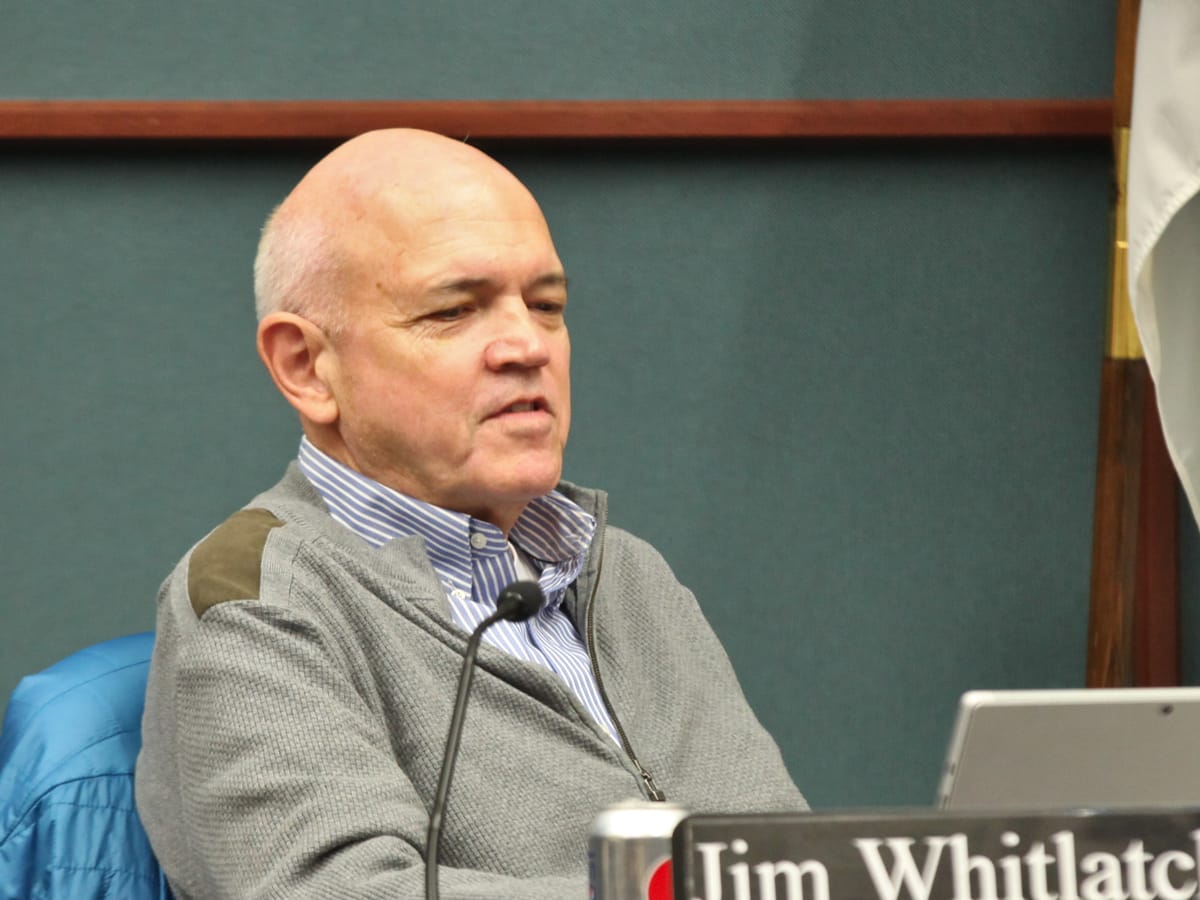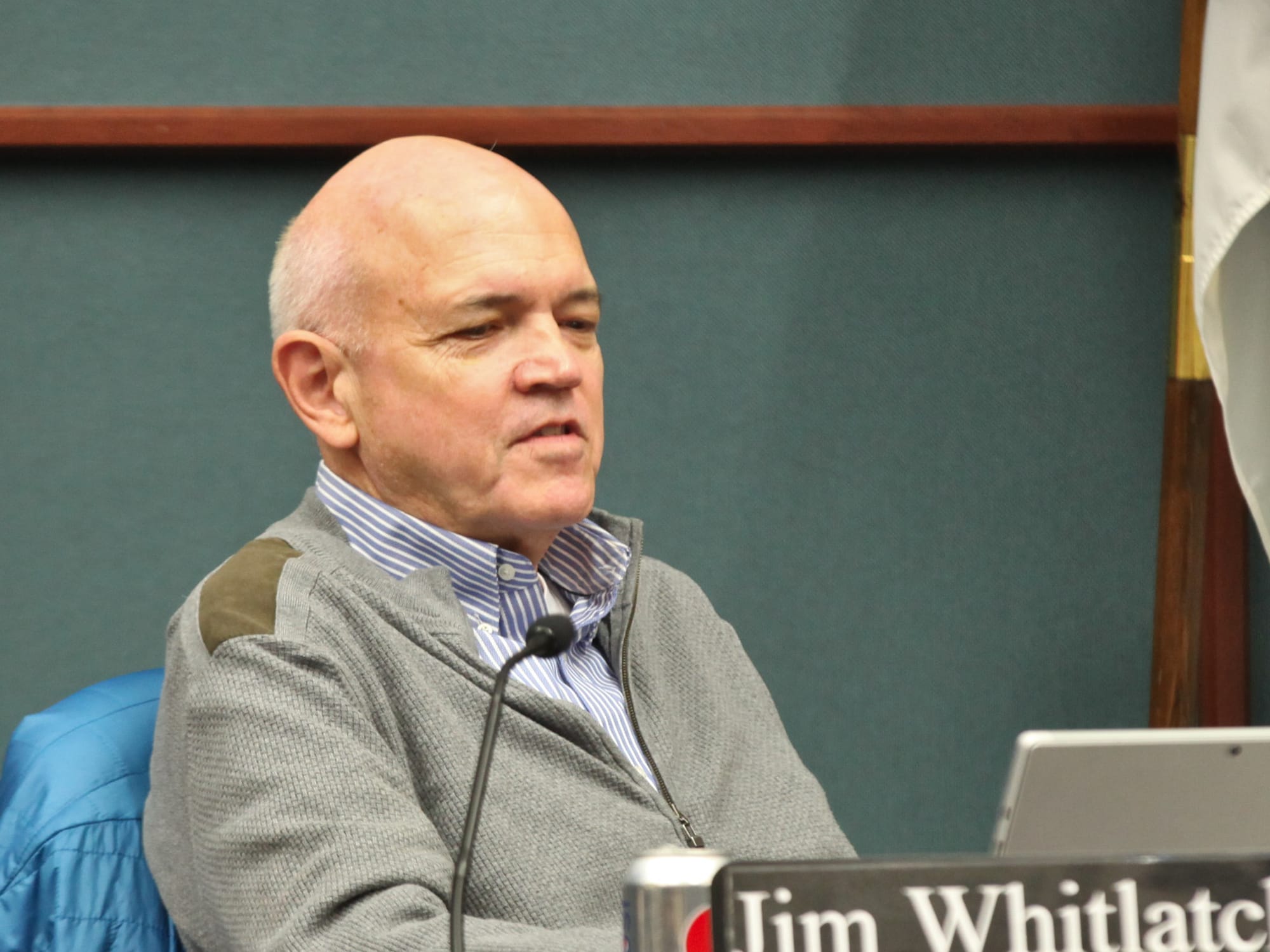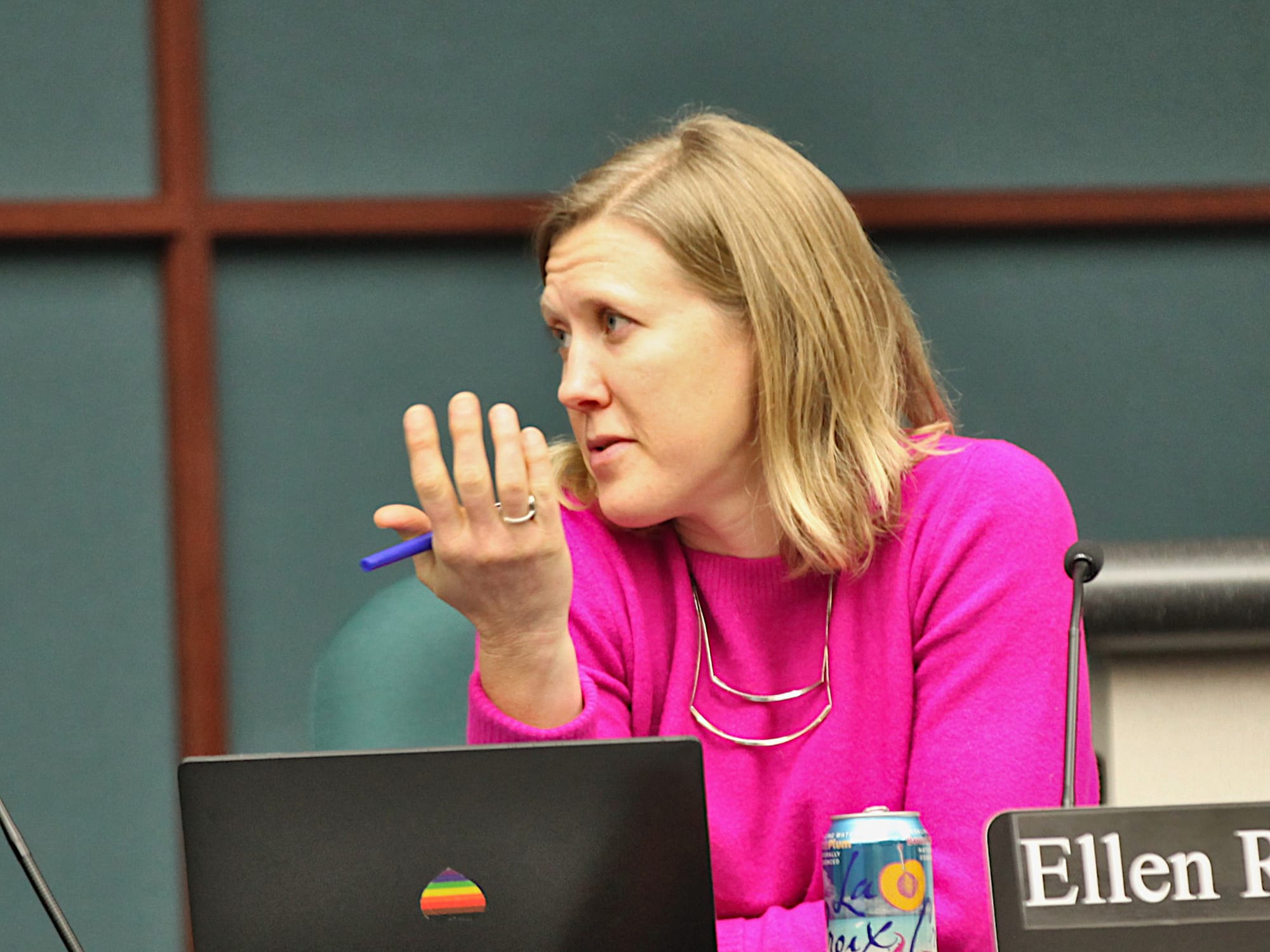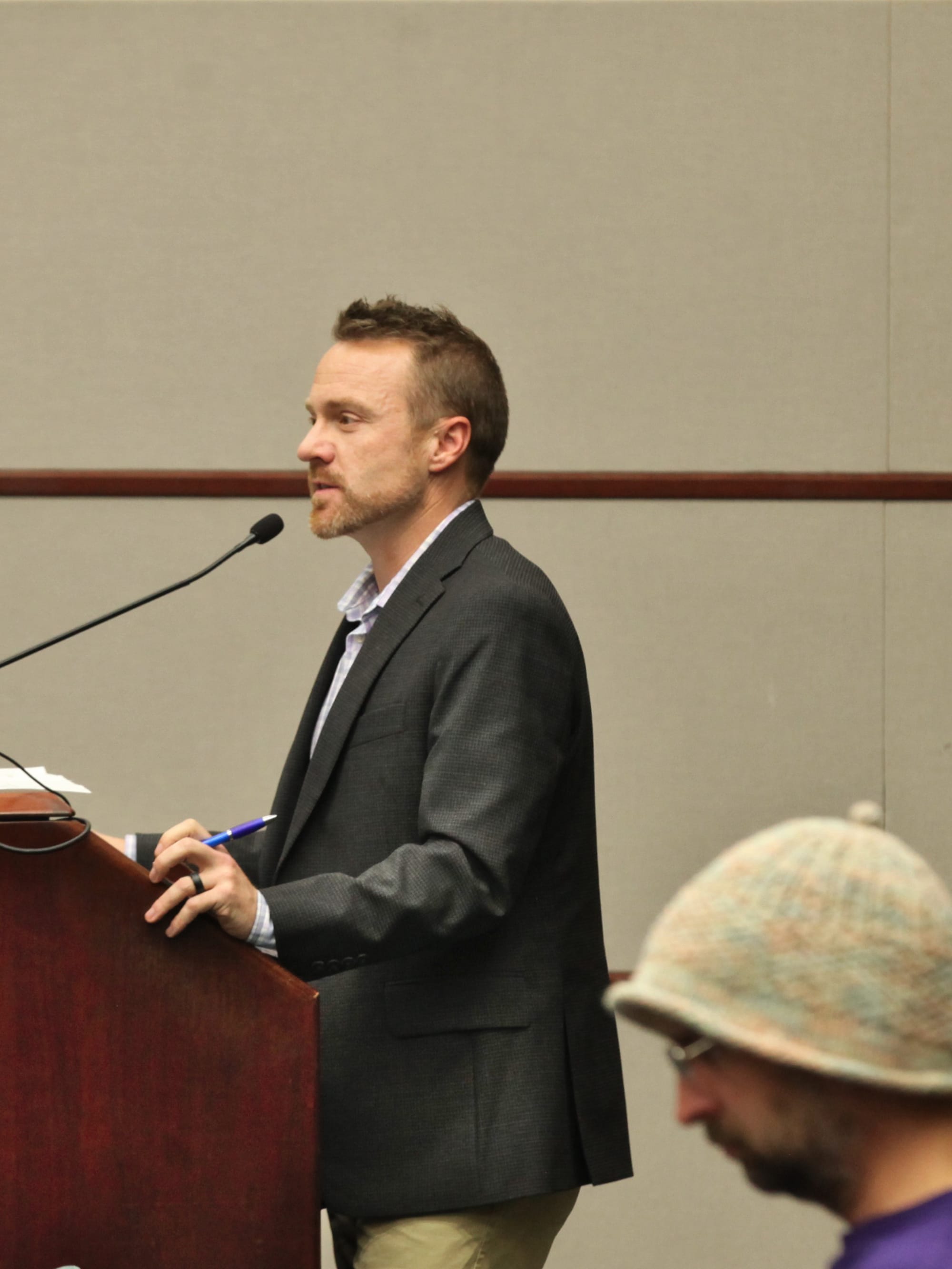Parks board, city engineer: Collaboration, consultation, or supervision on trail closures?





As currently drafted, a proposed new Bloomington parks policy would spell out how temporary and emergency closures of trails are implemented by the board of park commissioners—in “collaboration” with the city engineer.
On Tuesday, at its regular monthly meeting, the adoption of that policy was tabled by the board.
The presentation of the proposed new policy came from Tim Street, who is director of park operations. He described the policy as stemming from the closure of The B-Line early in the year, due to the hazard posed by the Johnson’s Creamery smokestack. The smokestack has now been partially demolished.
The board tabled the adoption of the new policy after park commissioner Jim Whitlatch, who’s an attorney, questioned the use of the word “collaboration” to describe the activity to be undertaken between the board of park commissioners and the city engineer.
Whitlatch said he would prefer that the policy make clear that it’s the board that makes the decision. So Whitlatch said the policy should say the board decides not in “collaboration” with, but in “consultation” with the city engineer.
A counterpoint to Whitlatch’s position came during public commentary from Bloomington resident Greg Alexander, who has, in his capacity as a member of the city’s traffic commission, for the last few months pushed the issue of the engineer’s role in making decisions about public right-of-way like The B-Line Trail.
A decision by the board to close a trail or approve a detour should not be made “in collaboration with” or “in consultation with” the city engineer, Alexander said. Rather it should be done “under the supervision of” the city engineer.
The initial B-Line detour implemented by the parks staff in January sent trail users who arrived at the closure from the north, across the city hall parking lot on an un-delineated route. Street told the board on Tuesday that the city received complaints about that detour.
Alexander was someone who complained about it.
The initial detour was revised a few months later, so that the route was delineated with orange water-filled barricades. It led trail users along a less circuitous route, roughly parallel with The B-Line. That detour also prompted some complaints.
Street told the board on Tuesday that The B-Line situation eventually led to some correspondence with the engineering department about how to manage the city’s roughly 30 miles worth of trails. Street said that the parks department manages trails both for their use as transportation infrastructure and for recreation.
The proposed policy divides the city’s trails into three classes:
- Class 1 Trails: They serve an important transportation function and have few or no similar alternative routes.
- Class 2 Trails: They serve a transportation function, but are not critical connectors and have similar alternative routes.
- Class 3 Trails: They function mostly as recreation facilities and have less importance as transportation facilities.
The B-Line is a Class 1 trail.
How does the trail classification system work? Depending on the scenario, higher classes of trail require the board of park commissioners to approve the closure. Lower classes of trail require only the approval of the park operations director. In any case, the flowchart in the draft policy says the decision is supposed to be done “in collaboration” with the city engineer.
During his public commentary, Alexander told commissioners that the proposed policy doesn’t comply with local law on the topic, which is Bloomington Municipal Code 12.08. That part of the city code requires that anyone who wants to close the right-of-way to get a permit from the city’s traffic engineer, Alexander said.
Alexander told commissioners that Indiana state law requires transportation decisions to be made under the direct supervision of a licensed engineer.
In the proposed policy, commissioner Ellen Rodkey found some instances of “collaboration” and other instances of “consultation” to describe the activity that the board was supposed to conduct with the city engineer. So she advocated for making the word choice consistent, whatever it turns out to be.
In favor of “collaboration,” Street said, “I do think it is important that we have and honor the expertise that comes from the engineering department in terms of road design, safety, AASHTO [American Association of State Highway and Transportation Officials] standards, things like that.”
Whitlatch responded to Street by saying, “I absolutely agree with that. That’s why we should consult with them.”
The motion to table the proposed policy, which passed unanimously on the four-member board, means that the policy could be taken up again, possibly in revised form, at the board’s next meeting, on Dec. 13.




Comments ()